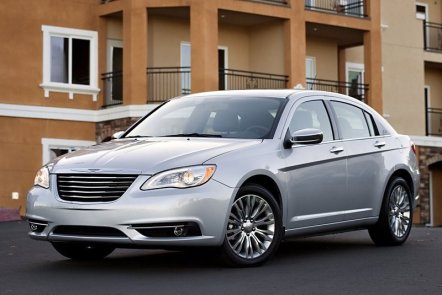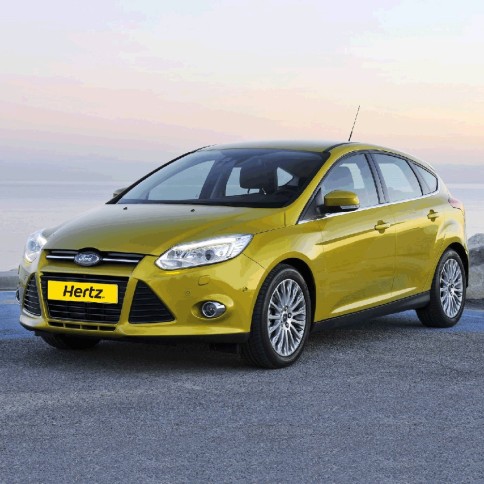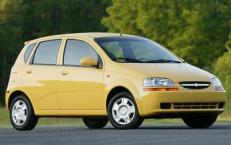Tagged: Chrysler
Dylan for Chrysler
Chrysler, so hot right now. Chrysler.
Above is one of Super Bowl XLVIII’s most buzzworthy ads–a two minute montage exploring and touting all of the reasons why there is nothing quite like an American car. Chrysler has done ads with a similar vibe previously, but this takes a more nostalgic, pop culture route–and knocks it out of the park. Love this ad–its a heaping helping of America, which of course is the best way we’re served.
There’s been some mumblings, of course–Bob Dylan, the anti-culture hero, doing an ad using faux-patriotism to promote big business? To that I say (1) this is hardly the first time Dylan or any of his contemporaries have appeared in or used his music to promote a product, and (2) the guy’s 70 years old–if he wants to make some money using HIS songs and image, who am I to judge?
All debate aside, the new Chrysler 200 being touted in the ad looks like a knockout (and a Ford Fusion–can’t blame Chrysler though, given the Fusion’s sales numbers).
200.1: A Chrysler Odyssey
Chrysler increased year over year sales of its lineup by 16% in the past quarter, due mostly to the strength of…wait…how is that physically possible? The Chrysler lineup consists of exactly four vehicles, one of which is the stodgy Town and Country and two of which are iterations of the Chrysler 200, which itself is a 2007 Sebring in makeup. The side views of the almost universally reviled 2007 Sebring (left) and the 2012 200 reveal just how slight the 2011 refresh was (refreshed the front and rear fascias, added a nifty “200” logo, and, eh, made it shinier?)
Where then, has not only this sales boost, but this shift in public perception of Chrysler come from? Chrysler is suddenly the epitome of All-American luxury and class; and it has a brilliant marketing campaign to thank. The company’s star-studded ads used the grittiness and determination of Detroit to represent its ascent from the ashes. The one problem so far is that it has made its ascent on some very rikety stairs. The company has introduced only one all-new vehicle since emerging from bankruptcy, due in part to the financial issues of its parent company, Fiat. We can compare Chrysler’s market repositioning to that of Buick, but GM’s near-luxury brand has been pumping out new vehicles with vigor, introducing the Regal, Encore, and Verano since the 2011 model year. It’s make or break time for Chrysler, and it looks like they just might have the product to continue the surge–the 2015 200 sedan.
Above are the spy photos of the new 200 and they do not dissappoint. The car has an alluring shape, with shades of the Dodge Dart, but on a larger wheelbase and better proportions. The car should utilize Chrysler’s 184hp four cylinder as a base engine and offer an optional V6 with upwards of 250hp. If executed effectively, the car should offer a nice, upscale alternative to the Accords and Camry’s of the world, and could even compete as a budget alternative to the Volkswagen CC and Acura TSX. Of course, as Chrysler has shown, even a completely botched launch is no mess a slick marketing campaign can’t clean up.
Beauty in the Eye of the C-Pillar
I propose this to you: the Chrysler Lebaron above is an ugly car. Nothing groundbreaking there, right? Well, what if I said that there is one overwhelming feature that makes this car a dog– even beyond the vinyl roof, hood ornament, and thin spoke hubcaps? The key here is the proportions, specifically the c-pillar (the pillar between the glass of the back door and the rear windshield. Cars have gotten swoopier and more streamlined in the past two decades, leaving this frumpy Lebaron’s design looking like a dinosaur. You just don’t see the long trunk deck and upright rear windshield anymore.
Another bombshell: The new-for-2013 Ford Fusion is a great-looking car. It brings the coupe-like sloping rear deck that has become extremely popular for the premium brands to the mainstream.
The Jaguar XJ below is a prime example of how dramatic c-pillar design can really enhance the elegance of an otherwise pretty standard looking luxury car.
Here are two examples of this design in earlier models: the Rover SD1 from the 1980’s and the Citroen C6 from the mid 2000’s. Both of these cars boasted styling that was considered pretty polarizing for their day (especially some of the way-out-there details of the Citroen, like the curved rear windshield). Looking at the overall shape of the vehicles, however, it is easy to see that they were both ahead of their time.
Luxury automakers have even had varying degrees of success bringing the shape to an SUV stance. The BMW X6 has been a surprise hit since its introduction three years ago, and Acura joined the fray in 2010 with its ZDX, which just recently bit the dust (probably because its front end resembled a bird of prey). Below is the interesting shape of the ZDX.
Mercedes has even taken this general shape to create its beautiful CLS wagon (not available in the US, like nearly every other wagon built today). The car’s greenhouse retains the same general shape, but the trunk is bumped out to create this gorgeous wagon.
The cyclical nature of car design is the only thing that’s for sure, however, so don’t be surprised to see the boxy, upright LeBaron style return with a vengeance before we know it.
Sales Numbers in the Dog Days
Because it’s the first of the month, automobile manufacturers today released their sales numbers for the month of July. Most makers suffered from the end-of-time model year, summertime blues–but this is always to be expected. Relatively unexpected, however, is the continued resurgence of the Chrysler name. The Chrysler, Jeep, and Dodge brands combined to move 126,000 vehicles, helped by strong Jeep sales as well as a logic-defying bump in sales for the Chrysler 200, a lightly redesigned version of the Sebring, th car that I put on the list of the worst cars of the 2000’s. If Chrysler can do all this with a depleted lineup, it will be interesting to see the sales numbers they can put up when a new 200 arrives next year, as well as a new Voyager and Jeep Cherokee (both names from the past, hoping to drum up some more success).
GM saw a slight drop in sales year-over-year, but still managed to move 201,000 vehicles for the month. Ford saw an equally small increase in sales. However, these numbers are impressive given the small amount of incentives both of these companies have used to move their cars. Additionally, GM saw a 41% drop in fleet sales and Ford saw a 16% drop in the same category. These are great signs, as fleet sales not only decrease the value of the model names sold, but they provide very little margins for the brands.
Among the foreigners, Honda and Toyota performed the best, posting sales increases of 45% and 36%, respectively. These numbers are trumped up because of the inventory problems both companies struggled with over the past year (due to the Tsunami).
Hyundai and Kia combined to sell over 110,000 vehicles for the month and both brands posted July sales records. Wayyyy down at the bottom, Mitsubishi continued to scuffle, moving less than 5,000 cars and seeing sales decrease by almost 50% year over year. Ouch.
Worst Cars of the 2000’s
For every innovative, beautiful, and timeless car introduced in the first decade of the new millenium, there was a frumpy, old-fashioned, and confused design that seemed out of place. The stakes were higher than ever in the past decade–companies began producing a lot more car for not a lot more money–and those who couldn’t keep up (read: Chrysler, Chevy) paid dearly. There are some common themes to this list of the worst cars of the ‘aughts’: Bazaar designs, bazaar pricing, and Chrysler products. Enjoy.
Isuzu Vehicross
The Isuzu Vehicross was introduced in the late 90’s and should have gone out with the Backstreet Boys and Smash Mouth. This plastic-clad behemoth featured not only extra-terrestrial styling, but an other-worldly price tag. The small SUV started at 35k, which put it out of budget for the value-conscious CR-V customer (less than 5,000 were sold in its 3 year lifespan). This vehicle was really the beginning of the end for Isuzu, who ceased production for the American market at the end of 2008.
Pontiac Aztek
What not-top-10 list is complete without one of the biggest miscues of the past 20 years of automotive history. Pontiac, in the late 90’s, had a great idea on its hands: a smaller, car-based SUV for the get-out-and-go generation. With cool features like a pop-out tent in the trunk, the Aztek was destined to be a hit. Until we got a glimpse of it. Bug-like eyes, gobs of plastic cladding, and too-small tires made this the most infamous car of the new millenium. Pontiac butchered a sure-fire hit–the type of car that could have sustained a company–and is now resting peacefully in the abyss. Coincidence? I think not.
Lincoln Blackwood
Now, I’m not the pretentious type who is gonna put vehicles like the H2 and the Excursion on this list–they were big and bulky, but well-liked in their hayday. This truck, however, was never, ever well-liked. Lincoln created a movement with the Navigator so they figured “hey, why not chrome up an F-150?” The Blackwood replaced the F-150’s cargo bed with a sealed, carpeted, trunk. If this wasn’t bad enough, the kiss of death came with those pinstripes on the rear body section. What were they thinking? Car and Driver summed it up the best when they called it the perfect thing to “drive to a black-tie barbeque.”
Chevy Aveo
One look at this car is enough to know why it’s on this list. The Aveo above is a 2008 model, though it looks like a ’95. Chevy’s response to the Toyota Yaris and Honda Fit was about 10 years behind every other car on the market when it was introduced–looks, drivetrain, handling dynamics were all horrendous. End of story.
Smart 4two
The Smart 4two is an interesting case: a good study in engineering, but a terrible, terrible car to own for 99% of Americans. The car works on the tight streets of Europe, but over here it’s like a fish out of water. Moreover, the car is shockingly expensive, shocking slow, and only gets 36 combined hwy/city MPG out of a 1.0L, 70 horsepower engine.
Dodge Caliber
This quirky Dodge, like the deceased Magnum, was a great idea that suffered from terrible execution. The Caliber has a shape like nothing else on the road and is surpringly roomy, but one look inside the cabin and it’s game over. The fit and finish are atrocious and the driving dynamics are numb. It’s shocking that Dodge is still selling the small car, albeit at a heavy discount. The 2012 model, on the Dodge website, boasts Sirius XM radio and a built in mini-fridge. Awesome!
Chrysler Sebring
The official car of Michael Scott was a disaster for Chrysler in the late 00’s. Once a respectable midsize vehicle, the 2007 redesign could not keep up the momentum Chrysler created with the 300. The car was instantly years behind the 4 year old Accord and featured the classic Chrysler plastic interior. It is crazy that the company is still selling a revised version of the Sebring, now called the 200, but you have to give them credit for taking an unsuccessful car and making it a relative hit without spending a lot of money.



















